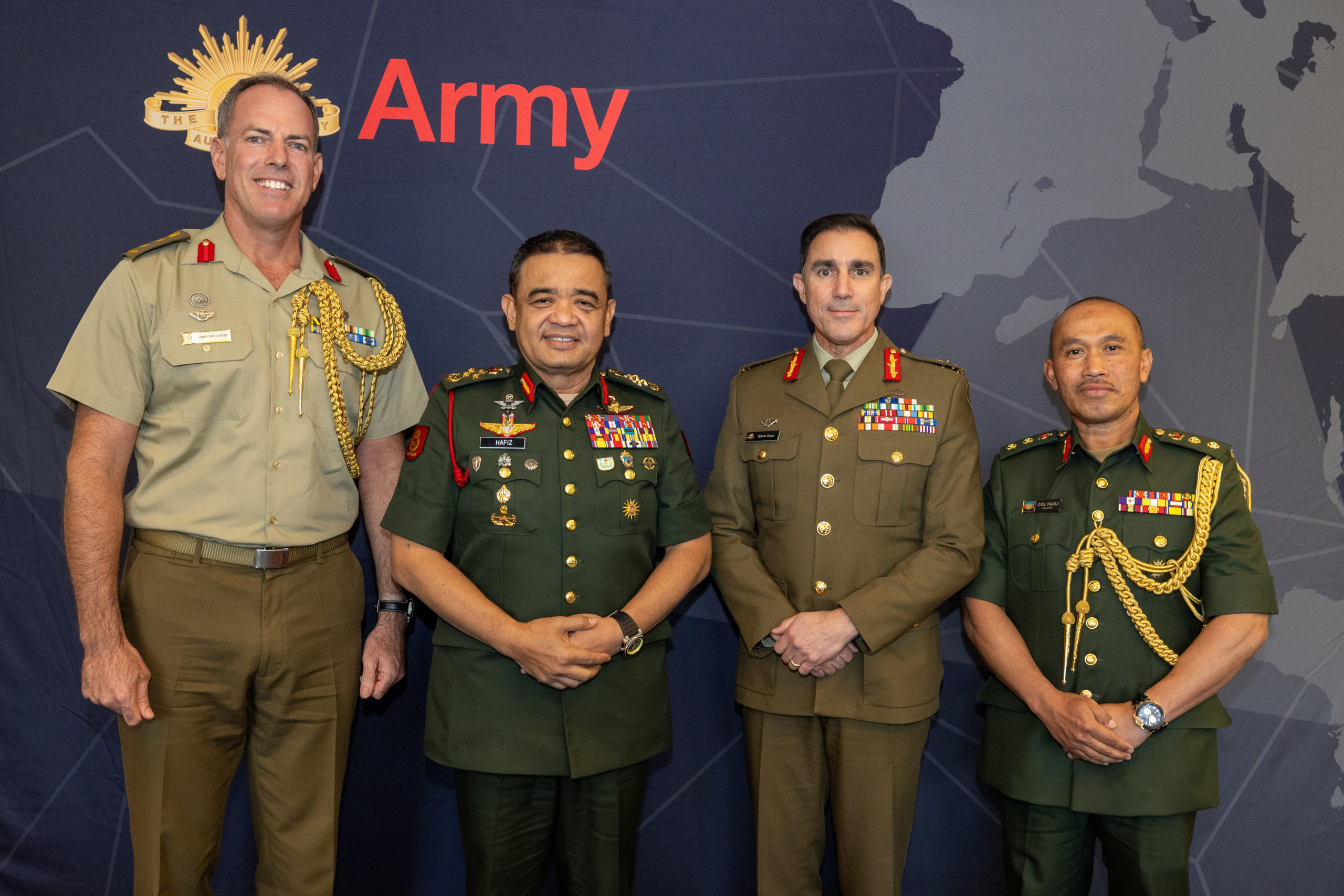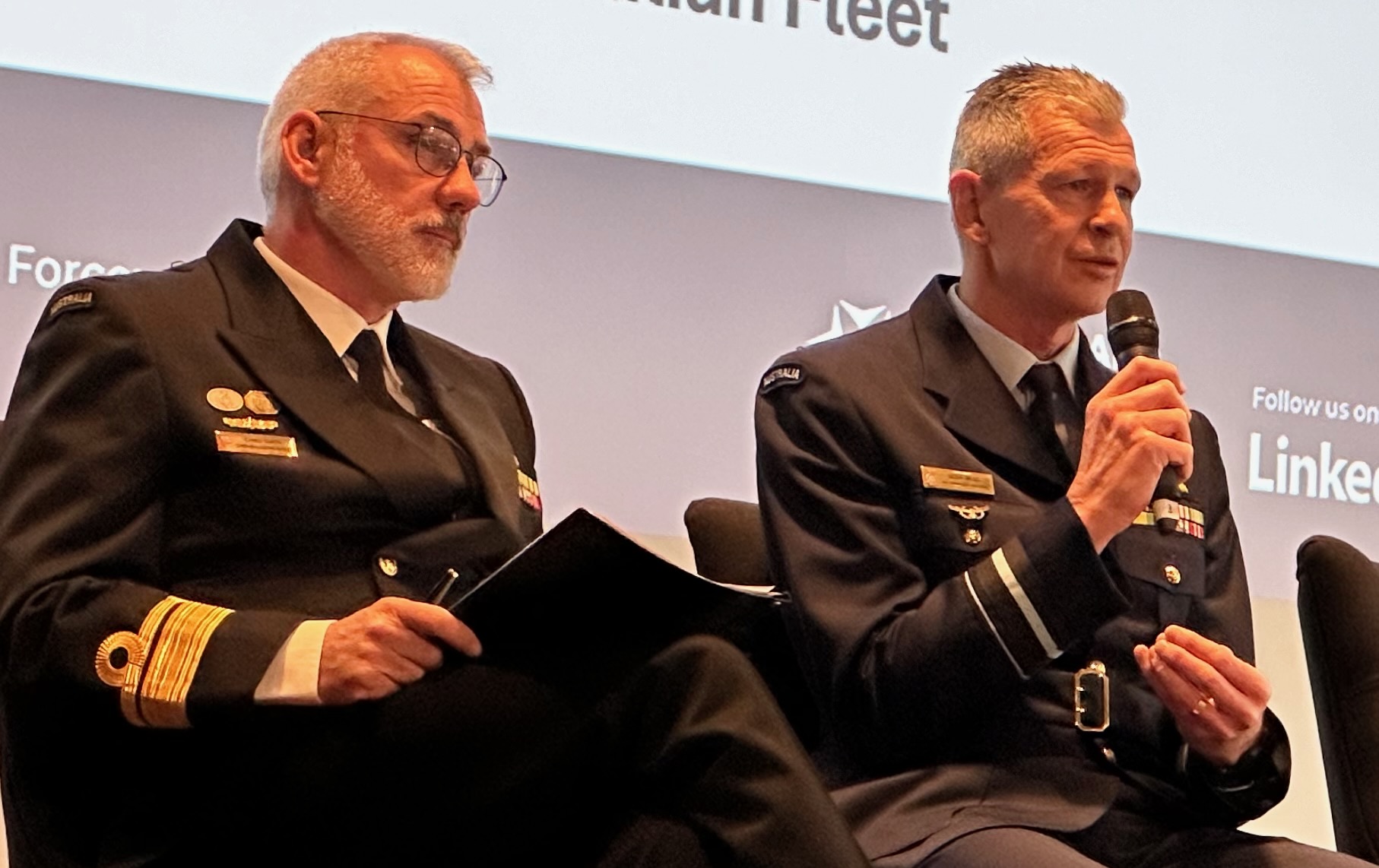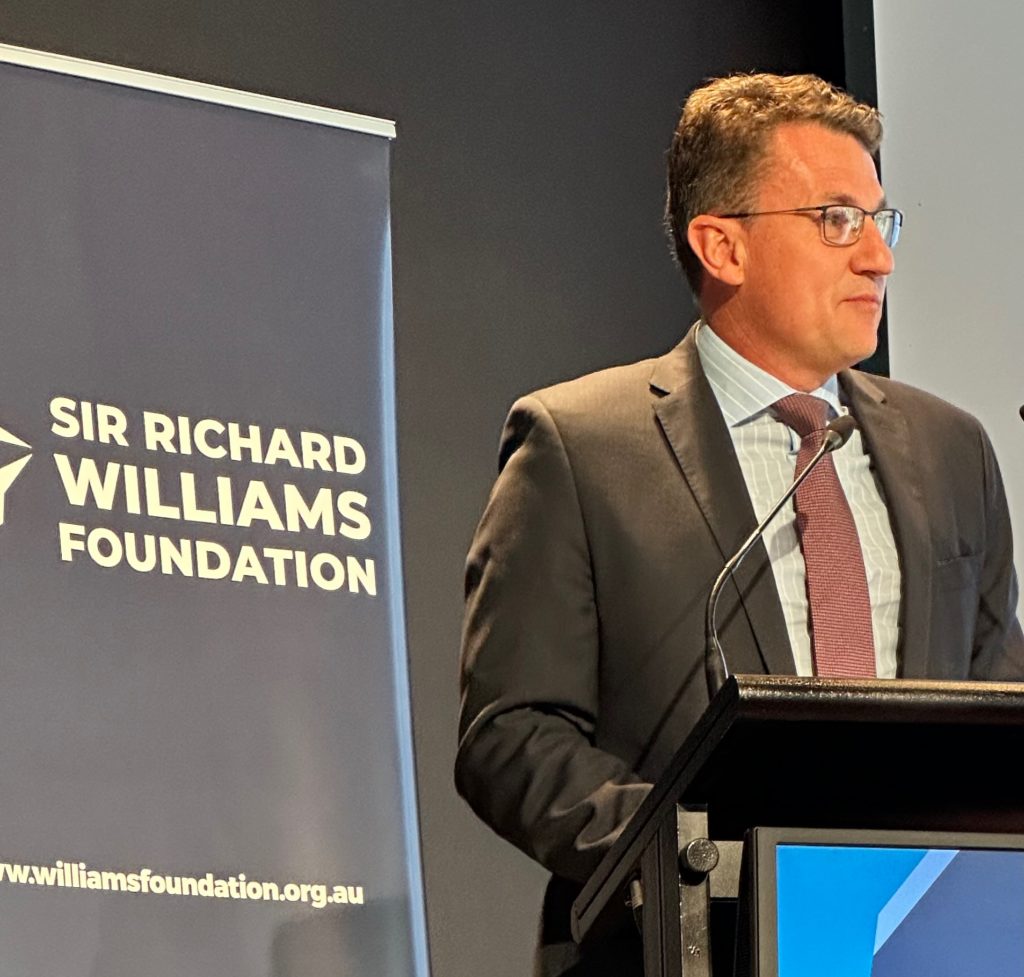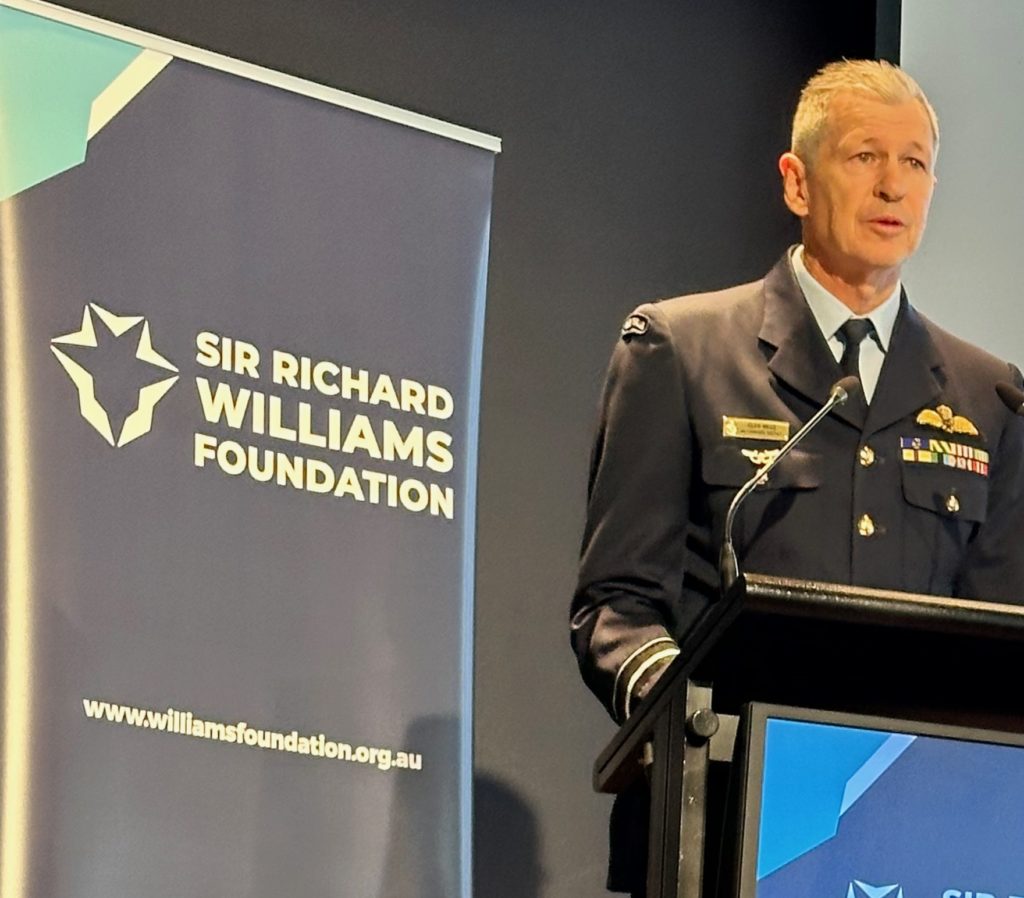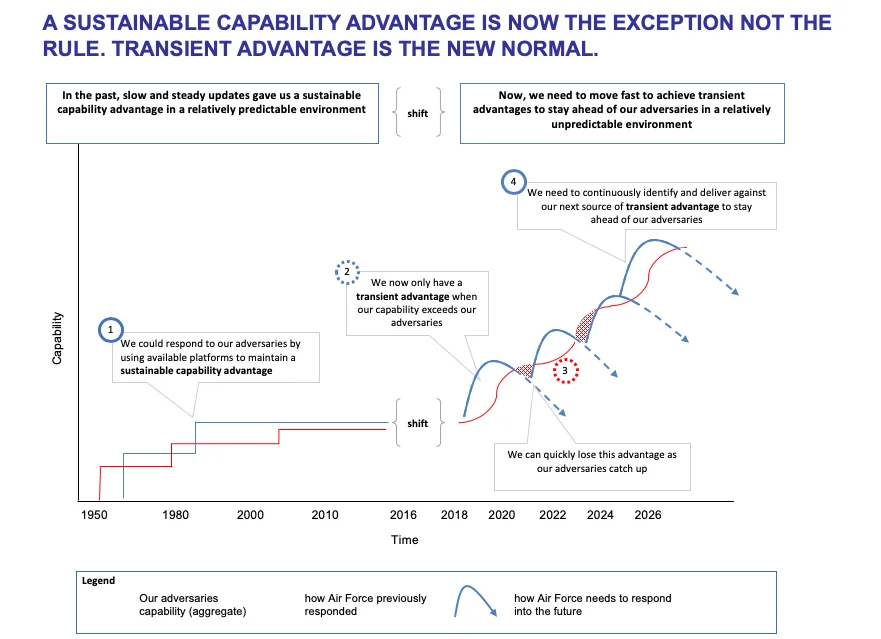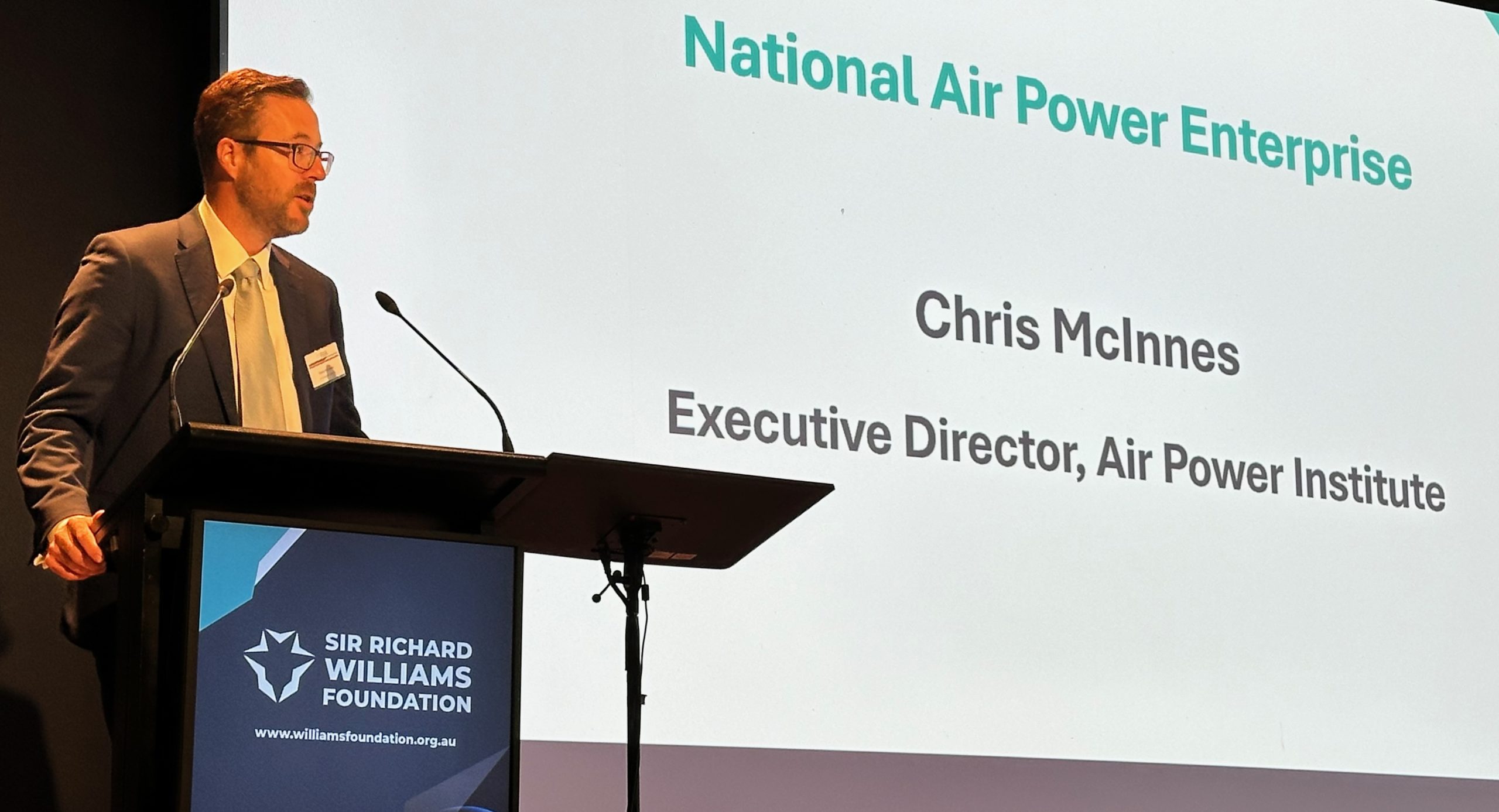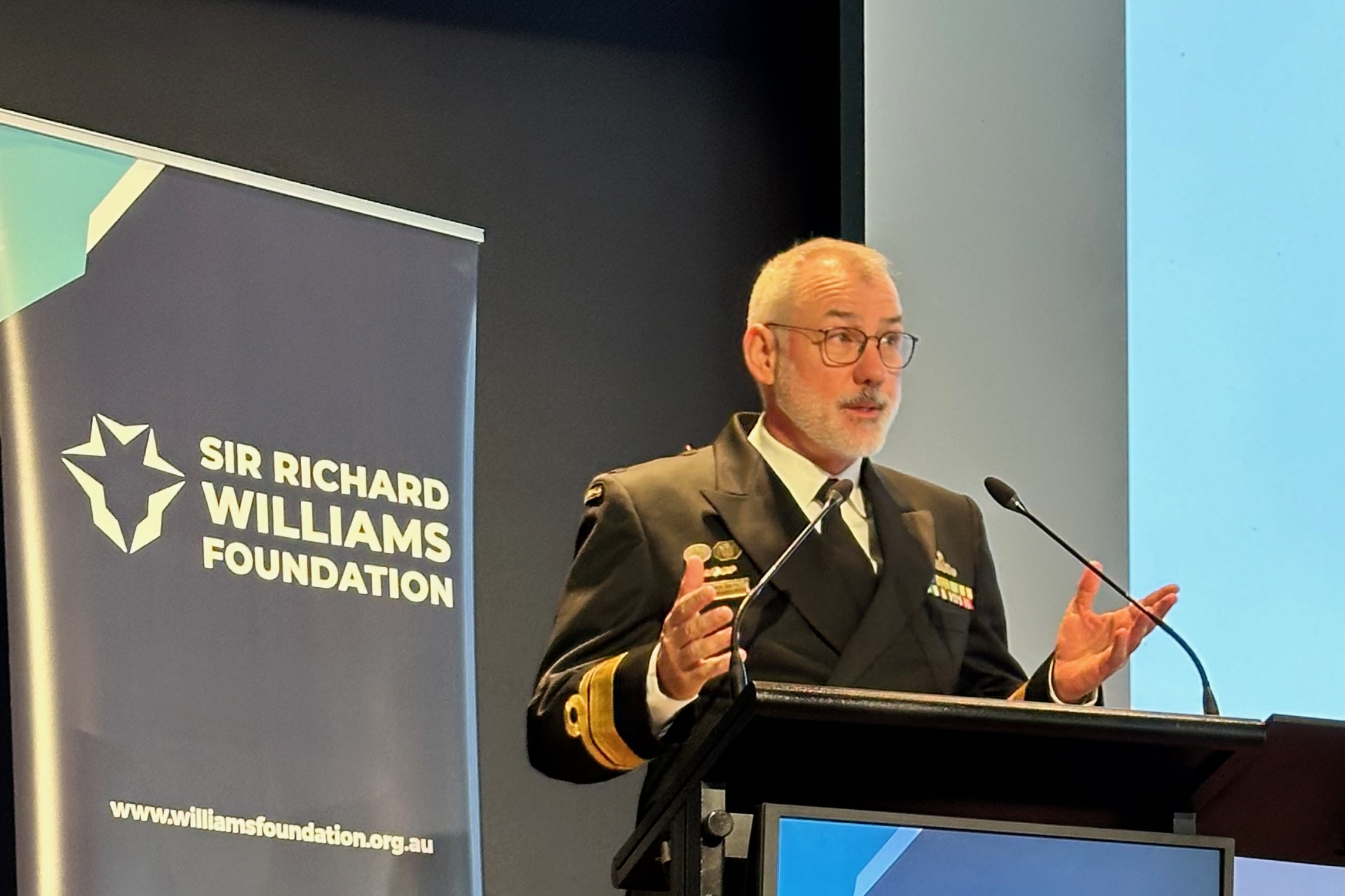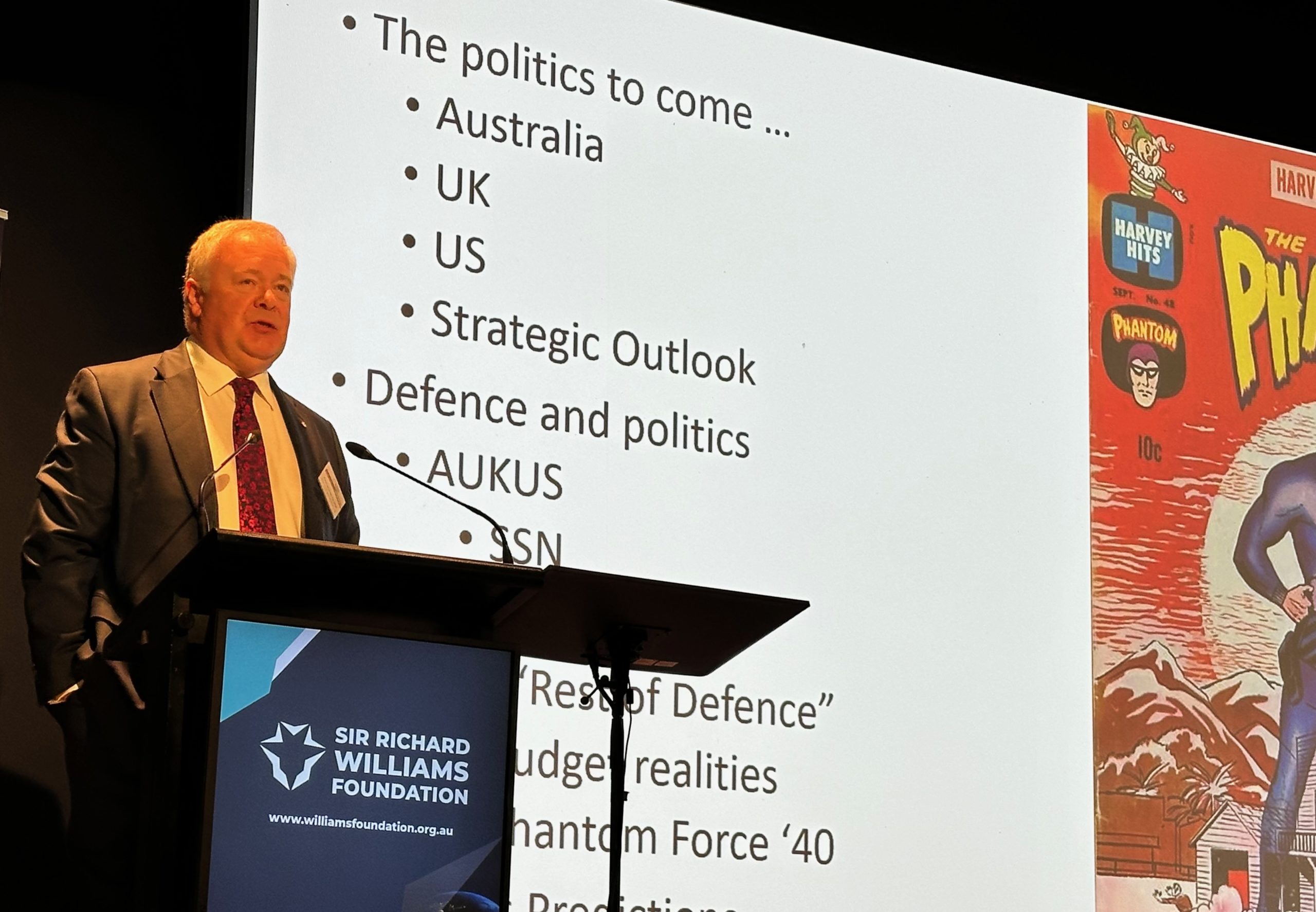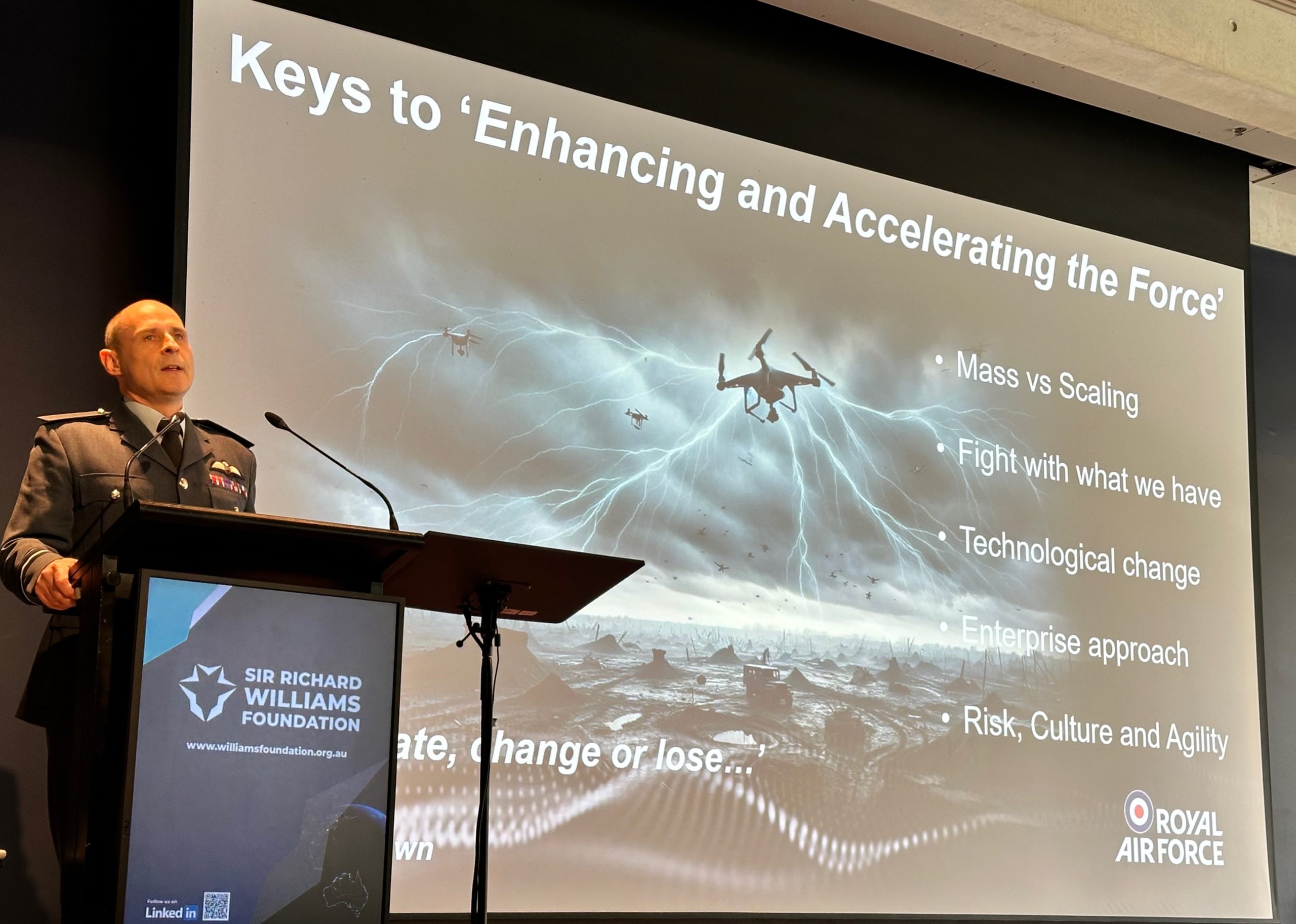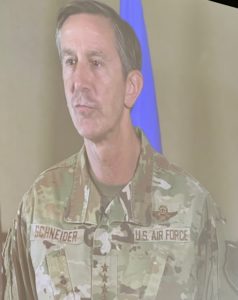By Robbin Laird
We focused in the September 26, 2024 Sir Richard Williams seminar on ways for the force in being to be augmented in the short to midterm. But for the effective defence of Australia as a nation, one needs to expand the notion from a force in being to a force in being embedded in the national enterprise which participates beyond the remit of the ADF to defend the nation.
Two presentations at the seminar provided insights in how to think about this approach. The first was by Chris McInnes, Executive Director, Air Power Institute, and the second was by Dr. Malcolm Davis from the Australian Strategic Policy Institute.
McInnes highlighted the importance of an Australian-wide aviation enterprise incorporating the civil sector as a key part of the overall defense of the nation. Davis focused on the space dimension as a key part of Australia having an effective capability to participate in the broader information society domestically and internationally.
In this piece, I will address the McInnes presentation and in the next piece the Davis presentation.
McInnes entitled his address: “Building a national air power enterprise.”
This is what he had to say on this subject:
Australia needs a concept and vision for a national air power enterprise. This is National Defence – the foundational principle of the NDS – in the air and is key to accelerating and enhancing the ADF’s effectiveness.
This enterprise includes the civil and military aviation sectors as well as the aerospace industry as complementary and interdependent components.
We need a vision of where the nation needs this enterprise to go, with national priorities and policies to reshape Australian air power.
These are the first steps in Australian air power becoming more than the sum of its parts.
We need it to be more than the sum of its parts this because Australia is a nation “uniquely reliant on aviation” as the Government’s Aviation White Paper declared in August.
We need it to happen now because the air superiority underpinning that reliance could be disrupted at any moment and responding to that challenge will be a national effort.
We are four years along from when we last had ten years warning time.
Historical analogies are imperfect but as Prime Minister Morrison invoked the 1930s when discarding Australia’s ‘ten-year rule’ in 2020, so shall I.
Britain dropped its ten-year rule in March 1932 – after Japan’s invasion of Northeast China but before Hitler came to power in Germany.
By the end of 1936, four years after Britain’s ten-year warning time elapsed – that is, where we are now – it had:
– Begun coordinating production of airframes and aero engines through the Air Ministry
– Devised the shadow factory scheme, which built more production capacity ‘in the shadow’ of related industries.
– Flown the first prototype Spitfire in March 1936 and ordered the first 310 production models by year’s end.
– Massively expanded flying training, including forming the RAF Volunteer Reserve and using civilian flying schools for elementary training.
Many setbacks lay ahead, but the foundations of Britain’s air power enterprise were in place.
This included the “foundational principle” that air power was a national – indeed an imperial – enterprise for Britain.
This enterprise approach is why the multi-national RAF never came close to losing control of the skies over Britain and why Western air forces eventually dominated the skies in all theatres, despite their opponents’ head start.
I would ask you to ponder the status of Australia’s national air power enterprise four years since our own ten-year rule lapsed.
While you think on that, I will to talk about why air power and aviation matters specifically to Australia.
When it comes to aviation and air power, I suggest many Australians – including large swathes of the Defence organisation – are bit like the two young fish in David Foster Wallace’s anecdote.
After a passing older fish says, “morning boys, how’s the water?” the two young fish swim on for a bit before one turns to the other and asks “what the hell is water ?”
This is an aviation nation – but we take it for granted.
The Aviation White Paper described Australia as “uniquely reliant on aviation” because it said we are, “a vast island nation with a dispersed population, far from our key trading partners and visitor markets, air transport provides Australians with critical links to each other and the world.”
Australia has about 0.3% of the world’s human population but responsibility for 5% of its surface area.
Air power turns days into hours and gives Australia and its residents choices and abilities that would not otherwise exist.
This is why Australia was an early adopter of aviation services – such as Qantas and the Royal Flying Doctor Service – and remains dependent on them.
The same is true militarily. The ADF reduces its need for surface forces by relying on air- delivered firepower, communication, transport, and observation.
Both civil and military aviation depend on air superiority to use airspace free from prohibitive interference.
Air superiority is the primary reason governments formed separate air forces– to ensure a nation could harness its air power to first secure its skies.
A key implication of the ten-year rule lapsing is that Australia’s comfortable assumption of air superiority is no longer valid, even over the homeland.
And it will not take a major conflict to challenge air superiority because it is generally a subjective belief. The perception of risk from any source can be enough to disrupt aviation, often severely.
Volcanoes, military operations or exercises, security incidents, and aerial intrusions have all disturbed the free use of airspace in recent years.
Consequently, potentially hostile actors, such as the Chinese Communist Party need not actually attack or threaten Australia’s airspace or aviation to unsettle nerves. Consider the experiences of Taiwan and Japan in recent years.
While not without challenges, the Peoples Liberation Army can project power into Australia’s periphery in a straightforward and perfectly legal manner.
Its about 2,500 km from PLA bases in the West Philippines Sea to entering the Indian Ocean via the Makassar and Lombok Straits.
That is about 3.5 hours flying time for H-6 bombers. Another two hours has them approaching Australia’s coast anywhere from Exmouth to Darwin .
Its less than a week’s sail for a PLA naval task group – which could include aircraft carriers approaching the size of US super-carriers in the next few years.
Notably, last week saw the first open-source evidence the PLA had three aircraft carriers at sea simultaneously. Six will be in service by 2035, including four big ones.
The world has seen over the last few decades how sensitive Australia’s politics can be to border security.
Consider the outcry over images of PLA aircraft with Darwin in the background.
Imagine they are visibly armed. Now imagine there are no Australian aircraft with them. In his classic 1966 book The Tyranny of Distance, Geoffrey Blainey observed “the ease with which foreign bombers… could fly to Australia was probably the sharpest mental change” for Australians experience of aviation in the first half of the twentieth century.
The same seems likely to hold true this century.
Now I have no doubt the RAAF can monitor and intercept PLA aircraft approaching Australia’s airspace. But covering multiple areas or sustaining alert for weeks or months if not years must surely be a different matter.
A peacetime challenge to Australia’s air superiority would have national implications and require a national response. An actual conflict would only compound this.
The elements of this response exist but there are few public signs of a coherent concept of an Australian national air power enterprise to add necessary depth.
The NDS, released in April, called for ‘a whole of government and whole of nation approach to Australia’s defence’ and that we needed National Defence as “a concept that harnesses all arms of Australia’s national power.”
Unfortunately, nobody told those responsible for the Aviation White Paper, published in August.
Instead, we have departmental rather than national policies that pass each other by like aircraft in cloud.
Each treats the civil, military, and industrial components of Australia’s air power as separate entities rather than part of a coherent whole.
The AWP – produced by the Department of Infrastructure, Transport, Regional Development, Communications, and the Arts – focused tightly on civil and general aviation.
The Department of Defence is not listed as having made a submission to the AWP, though it may have done so confidentially.
The NDS dealt with defence issues, of which air power is but one.
Policy responsibility for the aerospace industry, meanwhile, is truly fragmented – resting across Defence – which published the Defence Industry Development Strategy in February – and the Department of Industry, Science and Resources,
Thinking of military power as a national enterprise is not unique or new, it just is not clear in Australian air power policy.
The ADF peak air power doctrine defines it as “the total strength of a nation’s capability to conduct and influence activities in, through and from the air to achieve its objectives.”
This explicit characterisation of air power as national capability is a promising start, but the doctrine otherwise focuses solely military aviation and its applications.
Navalists have consistently portrayed Australian sea power as a national enterprise for years, leading to government investment in Australia’s merchant fleet and naval spending consuming more of the Defence budget than air, land, and cyber forces combined.
Britain’s 2018 combat air strategy explicitly placed a national values framework including whole-of-nation security and prosperity at the heart of its decision making.
New Zealand’s national aerospace strategy released this week explicitly links a vision of doubling the size of aerospace industry by 2030 to the country’s security and foreign policy.
Australia’s fragmented approach to air power is is making the enterprise less than it could be, just when shared challenges and deteriorating security demand the opposite.
There are shared challenges across the enterprise for which national solutions may offer opportunities.
At the highest level, there are over 16,000 aircraft on Australia’s civil register performing a wide variety of roles, including surveillance, response, and airlift.
What contribution could these make to Australia’s defence? What mechanisms are needed to make that happen?
To zoom in on a specific example, there are 28 A330 type aircraft listed on Australia’s civil register. This is the platform upon which the RAAF’s seven overworked KC- 30 tankers are based.
How quickly and by what means could civil A330s be modified in Australia to boost refuelling capacity?
What about A330 crews? Can they be inducted into military service to add depth or free up permanent crews for other requirements? Do they have to be in uniform to do so?
Zooming out again, there are more than 50,000 Australians working in civil aviation – that is a pool of aviation-savvy Australians almost triple the size of the RAAF. What role can they play in the defence of the country?
Workforce shortages are among the most serious challenges facing every part of the air power enterprise. But the components are competing for a diminishing resource.
The AWP recognises the ADF is a major source of skilled aviation labour but then describes it as a competitor that will “exacerbate future skilled aviation workforce challenges in Australian civil aviation.”
Treating the aviation skills base as a national asset could create opportunities to address civil shortages in the short-term while building a trained reserve for times of crisis, and the mechanisms for their employment.
Such an approach could look like the Volunteer Reserve approach Britain employed in the 1930s.
This low readiness reserve supported part-time aircrew training through civil aviation schools while also providing a means to induct trained personnel into service should the need arise.
The use of military training arrangements to grow the civil workforce while building a military reserve illustrates the interdependency of the air power enterprise.
Infrastructure challenges are also common.
The NDS says the Government will spend up to $6.6 billion on the ADF’s airbases in the next decade and acknowledged the need to ensure “civil society and civil infrastructure can support ADF requirements.”
This may be implemented through a Northern Air Base Network, alluded to at a conference in May, that will include “established military bases as well as other places that can support expeditionary air power.”
These NDS objectives are relevant to the AWP initiatives to spend an extra $90 million on the Remote Aviation Access Program and Regional Airports Program over the next three years.
But on this, along with every other aspect of civil aviation’s significance to the defence of the country, the AWP is silent.
What is missing altogether is guidance on how the Australia’s aerospace industry – development, manufacturing, and repair – can reshape Australia’s air power to create new potential in the national interest.
Instead, the aerospace industry is viewed primarily as a supporting function – and policy and priorities, often conflicting, are spread across multiple sources.
The Defence Industrial Development Strategy alone spreads direction for the aerospace industry across at least three of seven priority areas.
According to a 2019 report commissioned by the Federal Government, Australia’s aerospace industry included almost 1,000 companies, employed 20,000 Australians and boasted world-class research quality, uninhabited systems, and advanced manufacturing.
This is far more than a maintenance and repair industry.
Critically, the report also found the aerospace industry is independently commercially viable through diverse customers, including exports. This is not a government monopsony.
The report found the aerospace industry added almost $3 billion annually in gross value to Australia’s economy – more value add than shipbuilding and rail rolling stock – which are both supported by national approaches.
In the five years since then, and despite Covid, Australian companies have gone onto design and build a growing variety of advanced aviation components and autonomous systems domestically.
These include the fighter-sized Ghost Bat combat aircraft, designed, and built by over 200 Australian companies and the electric Vertiia – a vertical take-off and landing aircraft whose planned hydrogen-fuelled version will carry 500 kg payloads over 1,000 km.
In Australia’s geography, size matters.
But if there has been Government support for these efforts, it has been platform – or project-based, rather than efforts to build a coherent Australian autonomous air power ecosystem.
In a speech in May, the Chief of Air Force said the Air Force was exploring autonomous air systems to build a “national ecosystem that can rapidly scale production of uncrewed systems.”
That is promising but surely we can be doing more than exploring. Australian industry has a demonstrated competence and comparative advantage in a field that is advancing rapidly around the globe.
Moreover, it is an area of particular value to Australia because autonomous systems could liberate Australian air power from the constraints of a small population, just as aircraft overcame the tyranny of distance a century ago.
This is what I mean by the aerospace industry reshaping air power to create new potential.
But we first need a coherent concept of Australia’s air power enterprise and a vision of where the nation needs it to go.
Australian aviation operators and aerospace companies can then compete or collaborate across the enterprise to meet those needs. Governments should guide and support but avoid trying to control a a market-driven sector.
Deteriorating security and resources shortages are national challenges that demand national responses.
As an aviation nation, Australia needs its air power to be more than the sum of its parts. The first step in doing so is to think of it as a national air power enterprise.
Let me now unpack some of the ideas in his presentation and augment some of them.
I would start by turning to one of the RAAF’s key focus, namely on the need to create a more agile force able to operate across bases in Australia, notably Northern Australia. Last year John Blackburn and I interviewed the then Air Commander Australia, Air Marshal Goldie about his thinking with regard to being able to do this.
Goldie commented: We are developing concepts about how we will do command and control on a more geographic basis. This builds on our history with Darwin and Tindal to a certain extent, although technology has widened that scale to be a truly continental distributed control concept.
We already a familiar with how an air asset like the Wedgetail can take over the C2 of an air battle when communications are cut to the CAOC, but we don’t have a great understanding of how that works from a geographic basing perspective. What authorities to move aircraft, people and other assets are vested in local area Commanders that would be resilient to degradation in communications from the theatre commander – or JFACC?
We need to focus on how we can design our force to manoeuvre effectively using our own territory as the chessboard.
But to do this, the RAAF needs a civilian structure that can allow for this to happen. Where is the fuel? Where are the means to move the fuel on a distributed chessboard? Where is the personnel to support distributed logistical support for a distributed RAAF?
Without a well thought out civilian support structure, force distribution is challenging and maybe not doable. Normally when we talk about force projection, we are talking about going somewhere else to confront an adversary. For the RAAF, force projection is what they do to operate domestically.
The aviation enterprise which McInnes is calling for is part of the kind of mobilization which is crucial if defence is credible not just for Australia but more generally for liberal democracies. But shaping a feasible mobilization effort needs to start with the kind of enterprise thinking which McInnes provides, namely, to find ways to leverage domestic capabilities that are NOT part of the ADF but could be mobilized in case of crisis.
And in his presentation, he makes an important point when referring to the Chinese Communist Party and not to China. The CCP running China is the threat; it is not some benign nation state called China.
But I want to close by focusing on one very key point which McInnes underscored, which is the following:
In a speech in May, the Chief of Air Force said the Air Force was exploring autonomous air systems to build a “national ecosystem that can rapidly scale production of uncrewed systems.”
That is promising but surely we can be doing more than exploring. Australian industry has a demonstrated competence and comparative advantage in a field that is advancing rapidly around the globe.
There clearly needs to be a wider view of how to include autonomous systems in the force, and not simply thinking in terms of Air Force using air systems and the Navy using maritime systems as additive plus ups defined in terms of what manned systems currently do.
It really is the broader notion of a combined arms paradigm or ecosystem if you wish whereby there is a collaborative relationship between autonomous, unmanned and crewed systems. If we conceptualize the new systems as simply fitting into what crewed systems do we will wait too long to use them and not understand what they can and can not do.
Above all, we need to move from experimentation to putting then in the hands of the warfighters as they augment the force in being and allow it to become the transformative force without waiting for the future force.
Featured Image: Chris McInnes speaking at the Sir Richard Williams seminar on September 26, 2024.


